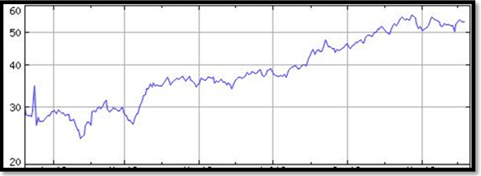Options trading, often perceived as a complex financial instrument, holds immense potential for savvy investors seeking income generation and risk management. While it may seem daunting initially, grasping the foundational concepts and exploring its practical applications can empower you to make informed decisions and harness its profitability.

Image: www.tradingtrainer.com
Understanding Options: The Basics
Options contracts are financial agreements that grant the buyer the right but not the obligation to purchase (call options) or sell (put options) an underlying asset at a specified price, known as the strike price, on or before a predetermined date, known as the expiration date. These versatile instruments offer investors various trading strategies, from income generation to hedging against portfolio risks.
Call Options: A Way to Profit from Rising Prices
Call options provide the holder with the right to purchase an underlying asset at a predetermined strike price before the expiration date. When the asset’s market price exceeds the strike price, call options gain value, offering the potential for significant returns. Conversely, if the market price remains below the strike price, the call option loses value and expires worthless.
Put Options: Protecting against Price Declines
Put options, on the other hand, provide the holder with the right to sell an underlying asset at a predetermined strike price before the expiration date. When the asset’s market price falls below the strike price, put options gain value, allowing investors to lock in profits or minimize losses. However, if the market price remains above the strike price, the put option loses value and expires worthless.

Image: www.stockwatch.com.au
Example of Options Trading in Practice
Imagine you believe that a particular stock is undervalued and expect its price to rise in the coming months. You could purchase a call option with a strike price slightly above the current market price and an expiration date several months out. If your prediction holds true, the call option will increase in value, allowing you to potentially profit.
Conversely, if you anticipate a decline in the stock’s price, you could purchase a put option with a strike price slightly below the current market price. If the stock price falls, the put option will gain value, offering protection against potential losses.
Expert Insights: Strategies and Risk Management
“Options trading requires a deep understanding of the underlying assets, market dynamics, and risk management techniques,” advises Lisa Rodriguez, a renowned financial advisor. “Thorough research and meticulous analysis are crucial for success.”
To effectively navigate options trading, consider these practical tips:
-
Set Realistic Expectations: Options trading involves both opportunities and risks. Manage your expectations and invest only what you can afford to lose.
-
Avoid Speculation: Do not buy options based on speculation or hunches. Conduct thorough research and analysis to make informed decisions.
-
Diversify Your Portfolio: Limit your exposure to any single option or underlying asset to minimize overall risk.
Example Of Options Trading
Conclusion: Empowering Investors through Options Trading
Options trading, while not without risks, offers sophisticated tools for savvy investors seeking to enhance returns or hedge against volatility. By understanding the fundamentals, exploring practical applications, and seeking expert guidance, you can leverage options trading to navigate financial markets and potentially achieve your investment goals. Remember, diligent research, prudent risk management, and a disciplined approach are paramount to success in this dynamic realm of financial instruments.






